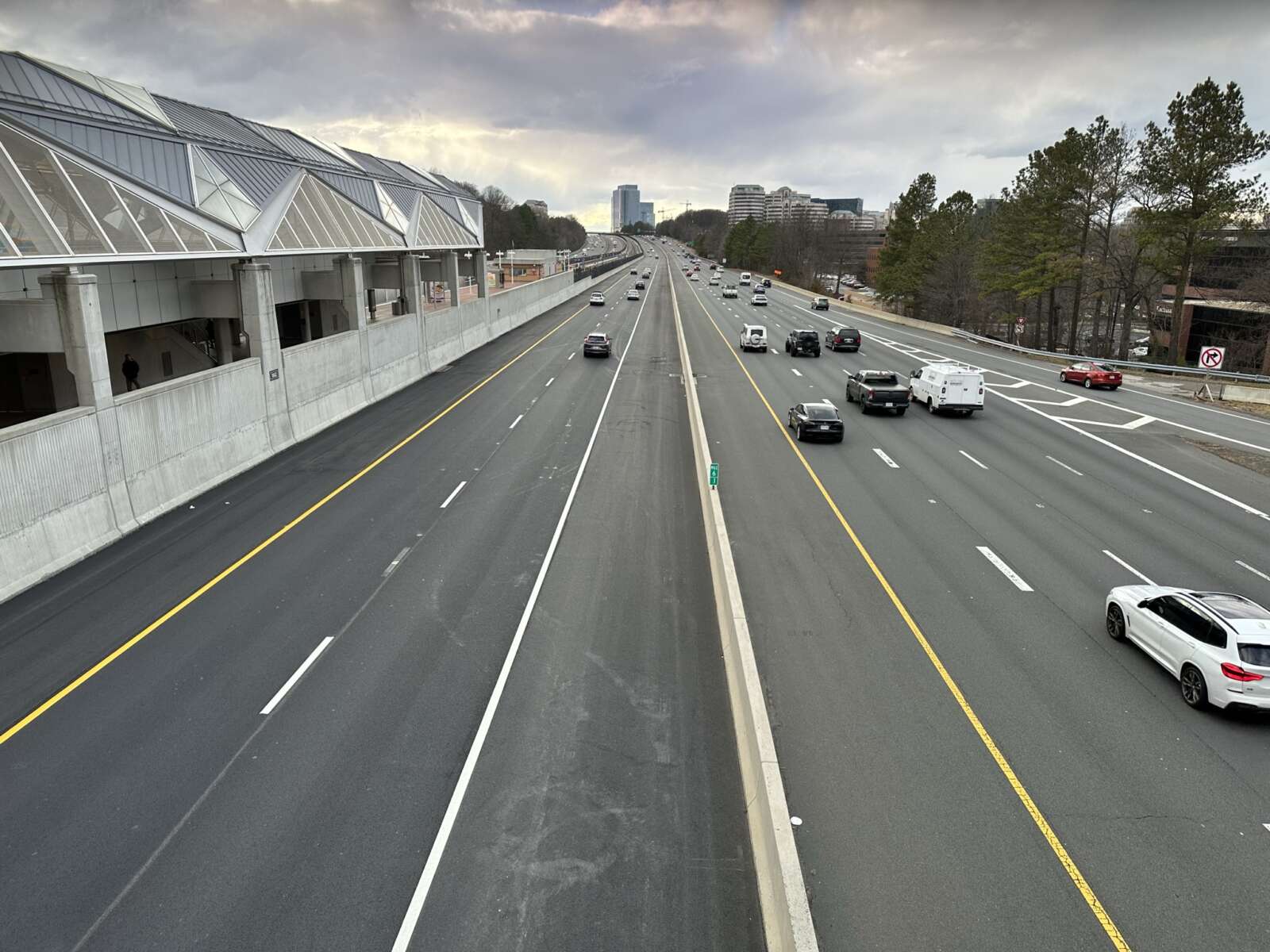
Fairfax County has launched a new data dashboard to offer insights into its mobility and transportation realm.
The dashboard — which was developed as part of the county’s strategic plan — dives into four indicators: efficient and varied transportation options; infrastructure conditions, sustainability and environmental impact; traveler safety; and increased accessibility, affordability and equity.
So far, data shows that working from home is decreasing after spiking at the start of the COVID-19 pandemic. According to the dashboard, 27.9% of residents worked from home in last year, down slightly from 37.2% in 2021.
Of the people who commuted last year, roughly 9 in 10 residents drove to work — with 80% driving alone.
The dashboard also highlights a spike in traffic-related deaths. In 2022, there were 60 fatal crashes, up 43% from 2019.
Although crashes of all types decreased by 17% from 2019 to 2022, the total number of crashes increased by 31% between 2020 and 2022.
Data from the dashboard is intended to illustrate how the county is doing on efforts to move away from reliance on single-occupancy vehicles, improve walkability and reduce traffic-related incidents.
“The dashboard is designed to inform residents and stakeholders, monitor progress overtime, identify any demographic or geographic disparities among residents, and guide community leaders, practitioners, and advocates in making data-driven decisions,” the county said in a news release.
The dashboard also highlights the fact that the county has installed 620 traffic calming devices since 1998, most of them at speed humps and speed tables.
The county plans to update the dashboard on a yearly basis in order to monitor community progress.
Work is underway to restore the waterways around the Fairfax County Government Center.
To support the Difficult Run stream restoration project, which began in October, the Fairfax County Department of Public Works and Environmental Services (DPWES) worked with a consultant to relocate over 200 fish and eels to the pond outside the Herrity Building (12055 Government Center Parkway).
In an approach that DPWES says is “unprecedented” for the county, the aquatic creatures were corralled using an electro-fishing boat provided by the consultant, Prince William County-based Solitude Lake Management.
A total of three eels, 49 bluegill and 145 golden shiners were moved on Dec. 5, making way for dredgings of the government center’s two amenity ponds.
“The American eel is actually an endangered species, so it’s especially good that we got them out,” Caleb Yankee, a fisheries biologist for Solitude Lake Management, said in a brief video shared by DPWES to showcase the relocation process.
According to Jonathan Witt, an ecologist in the department’s stormwater management division, electro-fishing involves electrifying the water “in the immediate vicinity” of the boat, stunning the fish and bringing them to the surface so they can be picked up in nets.
They were then put in a storage tank and transported to their new home less than a mile away.
DPWES emphasized that electro-shocking is a “sophisticated and humane technique that allows for efficient, safe fish relocation.” The county has utilized electro-shocking before, but on a smaller scale, using handheld devices instead of a full boat.
“The successful transfer of these aquatic residents to Herrity Pond signifies not only the protection of these species during the restoration project, but also the enrichment of the pond’s biodiversity,” DPWES said. “The fish have been carefully introduced into their revitalized habitat, marking a significant step towards ecological balance.”
In addition to dredging the ponds, the Difficult Run Tributary and Basins project entails restoring about 1,600 linear feet of stream, which will reduce soil erosion, shore up natural habitats on land and in the water and improve water quality, according to DPWES.
The northwestern portion of a trail on the government center campus recently reopened with the completion of the project’s first phase. Additional trail closures for the second and third phases are expected to start next week, according to DPWES spokesperson Sharon North.
“With the updated schedule, it could last [until] about May 2024,” North told FFXnow.
That would push back the end date for the fourth phase — which focuses on the streams and ponds along the property’s southeastern border — from September to November or December 2024.
After the project, the amenity ponds will be restocked with new native fish, DPWES says.
“Fairfax County residents are encouraged to participate in the final phase of the project, where they can witness the restocking of the amenity ponds,” the department said. “This event will offer a unique opportunity to observe the tangible impacts of such environmental initiatives.”

(Updated at 12:30 p.m. with Metro information) Thanksgiving is nearly upon us, bringing with it the promise (or threat, depending on your situation) of family gatherings and days off for many public services.
The Fairfax County, Fairfax City, Herndon and Vienna governments will all observe the holiday tomorrow (Thursday) by closing their offices, but schedules are more varied for Friday (Nov. 24).
Many private businesses and indoor shopping centers will also close for Thanksgiving, though most will reopen for Black Friday, because there’s nothing like a day of unabashed consumerism to follow a day of gratitude for what we have.
Shopping Malls
Tysons Corner Center, the D.C. area’s biggest shopping mall, will close tomorrow, but shoppers can get an early start on Black Friday, when doors will open at 6 a.m. and stay open until 10 p.m. Tysons Galleria will also close for Thanksgiving and open with modified hours of 10 a.m. to 8 p.m. Friday.
Over at Fair Oaks Mall, a Thanksgiving closure will be followed by Black Friday hours of 8 a.m. to 9 p.m. Springfield Town Center will be open from 8 a.m. to 10 p.m. on Friday.
Trash and recycling
Fairfax County trash and recycling customers won’t experience any change in services for the holiday. However, the I-66 Transfer Station and I-95 Landfill Complex will be closed on Thanksgiving and open the day after. Administrative offices will be closed through Friday.
“If you have private collection, please contact your hauler,” the Department of Public Works and Environmental Services says.
The Town of Vienna will have no waste collection on Thanksgiving, and on Friday, only trash and recycling will get picked up. The Town of Herndon isn’t collecting yard waste this week, and Thursday trash pickups will be collected on Friday instead.
Fairfax City will similarly conduct both Thursday and Friday curbside collections on Friday.
Transportation
On Thanksgiving, Metro will operate trains and buses on a Sunday schedule, with trains running from 7 a.m. to midnight. Regular service will resume Friday.
Fairfax Connector will provide Sunday service tomorrow and holiday weekday service on Friday. The bus service’s stores and customer service center will close for Thanksgiving, reopening for regular hours on Friday.
Fairfax City’s CUE bus system won’t operate on Thanksgiving, but reduced weekday service, with one bus per route, will be available Friday.
Starting at noon today, the Virginia Department of Transportation is pausing most highway work and lane closures on major roads until noon on Monday, Nov. 27. Drivers will also be able to use the I-66 Express Lanes inside the Capital Beltway (I-495) without any rush-hour tolls on Thanksgiving. Read More
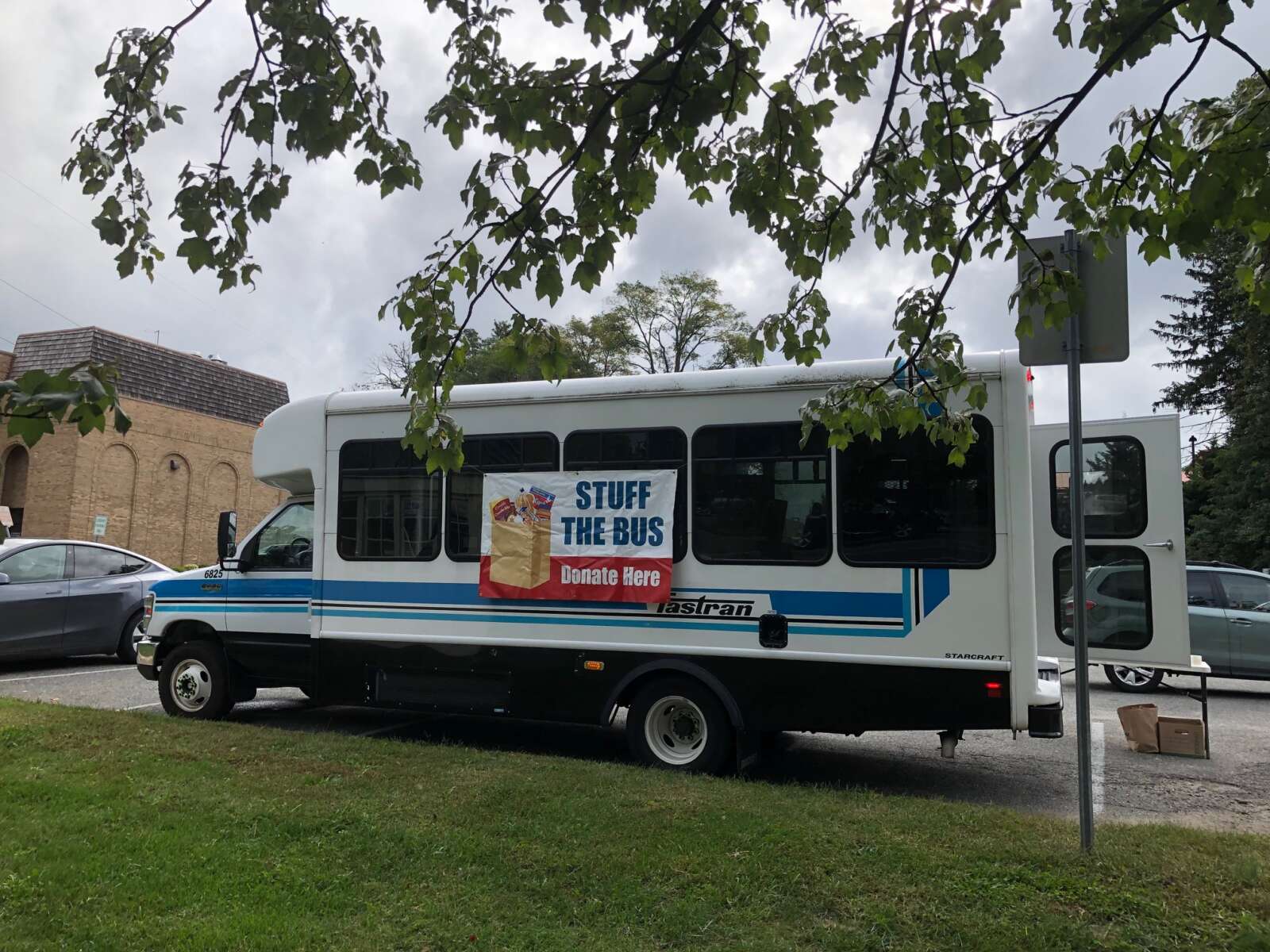
Fairfax County’s annual Stuff the Bus food drive has gone virtual, allowing people to make online donations directly to local nonprofit organizations that provide food assistance in the county.
This is the county’s 12th year partnering with local nonprofits to participate in the campaign, according to a county release. Previously, people could only make physical donations directly inside Fastran buses parked outside grocery stores or libraries.
“While that will still be offered for the Winter 2024 Stuff the Bus campaign, the virtual food drive will help prepare Fairfax County’s nonprofit food access partners for the busy holiday season,” Fairfax County Neighborhood and Community Services (NCS) said in the release.
The campaign comes months after the Capital Area Food Bank’s 2023 Hunger Report found that 24% of county residents are food insecure — a statistic referenced in the NCS release.
“Inequitable economic recovery from the pandemic, inflation, and the end of many federal benefit programs make it difficult for families to put food on the table,” the release states.
NCS Equity Program Manager Ramona Carroll said in the release that virtual donations will open up the campaign to people who can’t donate in person.
“In addition to convenience for the donors, it helps the nonprofits receiving the contributions because they can use the funds to purchase fresh and culturally-appropriate foods for the neighborhoods they serve,” Carroll said.
Stuff the Bus was created in 2011 as a “response to a critical need to help restock the shelves of local food pantries after the holidays.” The campaign has collected more than 220 tons of food since it started.
The virtual campaign runs through Nov. 30. An in-person Stuff the Bus campaign will return on Jan. 24 at local grocery stores and other locations throughout the community. The county encourages donations of items that are high fiber, low sugar and low sodium.
The most-requested items include:
- Cooking oil
- Corn Flour Maseca
- Bag (dry) beans, peas or lentils (16 oz.)
- Rice – brown or white (5 lbs. or smaller)
- Canned fruit in light syrup or juice (20 oz. or smaller)
- Healthy hot and cold cereal (42 oz. or smaller)
- Healthy snacks (e.g. raisins, granola bars)
- Canned tuna, salmon or chicken (15 oz. or smaller)
- Canned tomatoes – low sodium, no salt added (29 oz. or smaller)
- Soup – lower sodium (19 oz. or smaller)
- Canned pasta (16 oz. or smaller)
- Macaroni and cheese
- Peanut butter (40 oz. or smaller)
- Fruit jam (32 oz. or smaller)
- Instant potatoes (16 oz. or smaller)
- Pancake mix (32 oz. or smaller) and syrup
- Canned vegetables – low sodium, no salt added (29 oz. or smaller)
- Canned beans or peas (29 oz. or smaller)
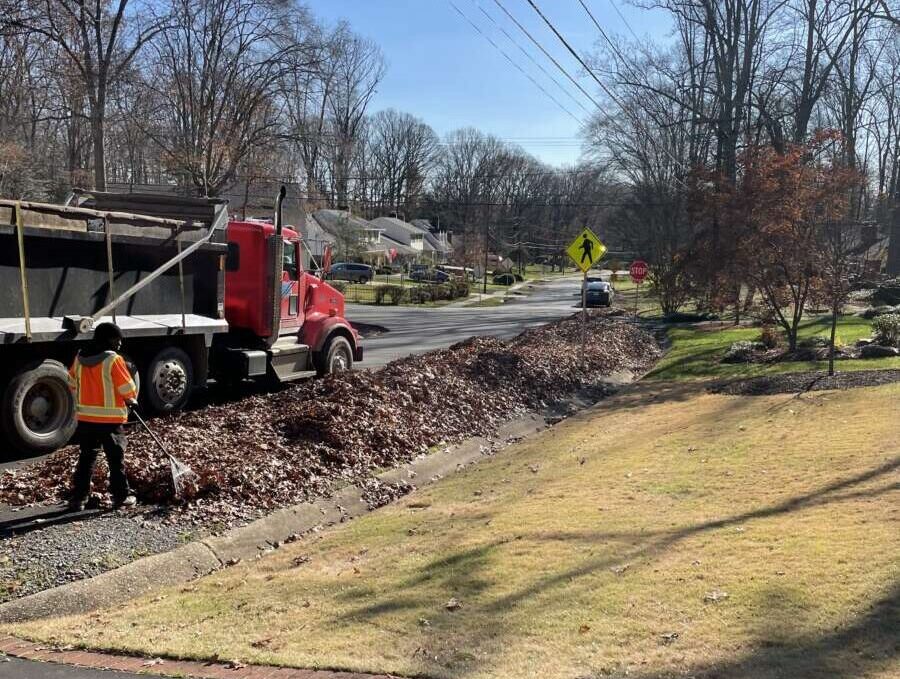
Fairfax County will continue providing fall leaf collection services at least until the 2025-2026 season, the Department of Public Works and Environmental Services announced today.
Consideration of a proposal to eliminate the service has been suspended for now. The department sought public feedback on the recommendation this summer, citing environmental concerns, rising costs and “operational issues,” including staff shortages and collection delays.
Annandale Today first reported last week that DPWES has backed off its plan, citing an email from Mason District Supervisor Penny Gross, who represents most of the approximately 25,000 residents who use the county’s leaf collection services.
DPWES staff maintain that the service may not be worth continuing long-term, but the results of this summer’s online survey convinced them that it’s not the right time to end it.
“Seasonal vacuum leaf service is not necessary to maintain healthy trees, has negative environmental impacts, detracts from the County’s core residential trash collection service, and creates public safety challenges,” DPWES said in a press release. “However, results from an online survey conducted by DPWES indicated most respondents were in favor of keeping the service and many current customers needed more information about alternative leaf management methods.”
An online petition opposing an end to leaf collections has garnered almost 1,500 signatures. In an Oct. 19 update, the petition creator credited Fairfax County Board of Supervisors Chairman Jeff McKay and other supervisors who represent the affected residents with halting the proposal.
McKay’s office confirmed to FFXnow that he had directed staff to pause the proposal at a recent meeting with them.
DPWES says it will use the next few years to conduct an outreach campaign focused on informing residents “on more environmentally-beneficial alternatives to manage leaves on-site,” such as mulching and composting. The county also collects yard waste as part of its regular trash services.
The department notes that residents can petition the county to voluntarily withdraw from the service.
This year’s vacuum leaf collection season will start as scheduled in November.
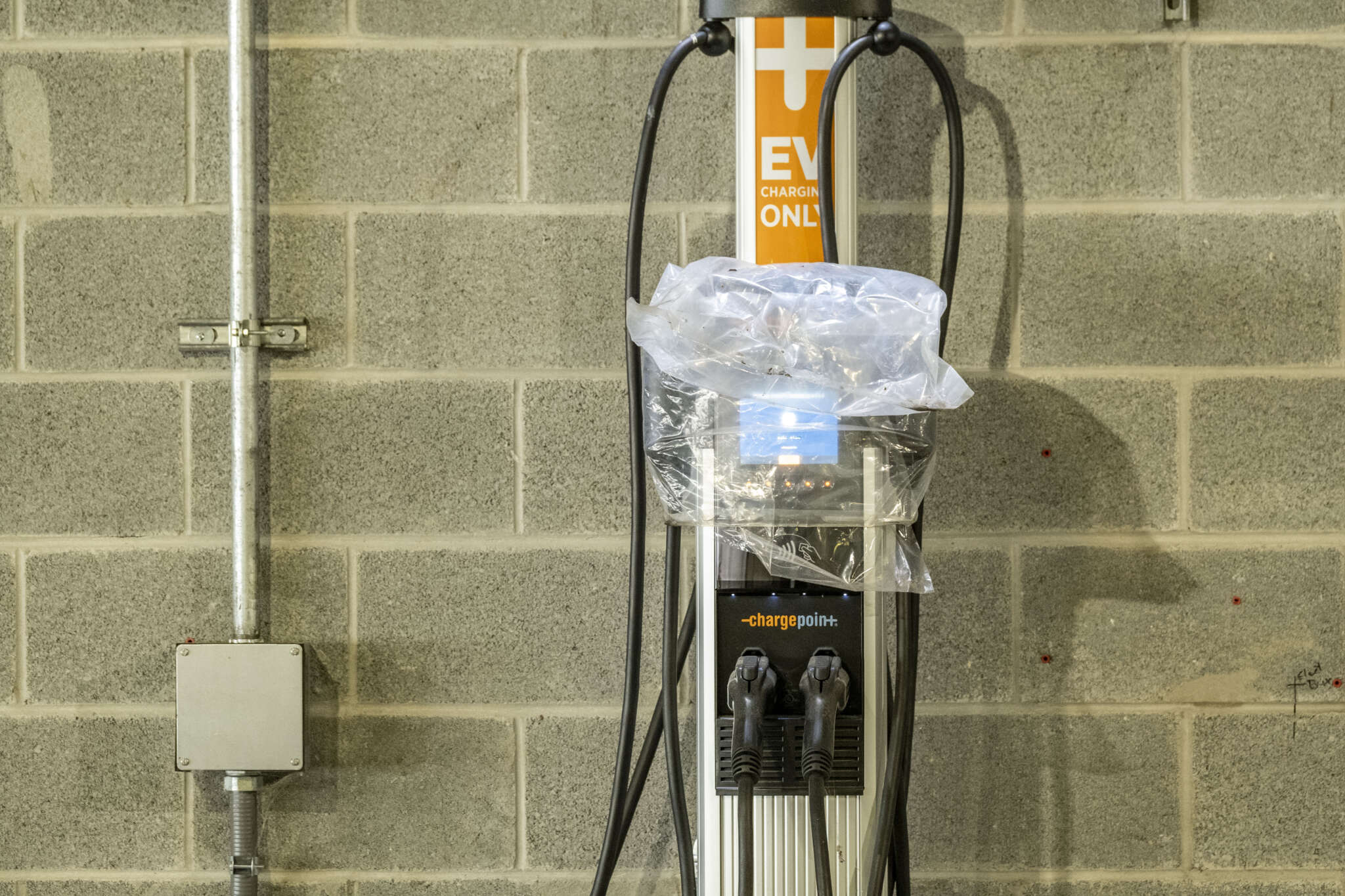
Fairfax County is ramping up its efforts to help homeowners’ associations and other resident groups bring electric vehicle chargers to their communities.
The county’s Office of Environmental and Energy Coordination is now accepting applications for the second phase of its Charge Up Fairfax pilot program, which provides technical and financial assistance to organizations looking to add charging stations in common areas.
“County staff and consultants will work with a new cohort of five common-interest (e.g. HOA) communities,” OEEC acting director John Morrill said in an Oct. 11 memo to the Board of Supervisors. “This second phase of the pilot will build upon initial participant feedback and lessons learned to bring more informed assistance to additional communities.”
The application window will be open through Nov. 12. In the memo, which was delivered to the board’s transportation committee yesterday (Tuesday), Morrill said his office hopes to launch the program at full scale next spring.
As the county pushes to expand Charge Up Fairfax, the HOAs selected for the pilot’s first phase in March are still working to get EV chargers into the ground.
Chosen out of nine applicants, including one that later withdrew from the process, the five communities were:
- Penderbrook Community Association
- Hidden Creek Homeowners Association near Burke
- Three Reston neighborhoods — Harpers Square Cluster Association, Nantucket at Reston and the Inlet Cluster Association
Prior to the pilot’s launch, Reston Association had anticipated starting installations as early as July, but as of September, none of the five participating groups have selected a contractor yet, Morrill said in the memo. Four are now discussing quotes from contractors with their boards.
“There are no further updates beyond what is documented in the memo,” OEEC spokesperson John Silcox said when asked if any progress has been made in the past month.
Though Charge Up Fairfax hasn’t resulted in any new EV chargers yet, the pilot has helped the county and HOAs learn more about the process and obstacles that residential neighborhoods face when trying to add that infrastructure.
The two top challenges that the HOAs have encountered so far are the cost of installing chargers and the limited availability of guest parking, since the stations have to be accessible to all residents and guests, Silcox told FFXnow.
Townhouse communities will soon be required to provide visitor parking in common areas after the Board of Supervisors approved new parking regulations last month that will take effect on Jan. 1.
The county is paying up to $10,000 for engineering site visits and feasibility assessments by its consultant, Vybe Energy, for each of the communities, which can also get grants to cover up to one-third, or $5,000, of their installation-related costs reimbursed. HOAs in highly vulnerable areas can get up to $10,000 reimbursed.
However, one of the HOAs has been “reexamining whether to move forward with community charging stations” or have residents install stations individually in their assigned spaces, the OEEC said. Another group is still determining how many stations it will install, and a third has put its project on hold after it had to shift funding to address “more pressing repair needs.”
In addition, two communities are working with county staff to potentially create more parking spaces that could be used for their EV chargers, according to the memo.
Despite those challenges, the OEEC says interest in Charge Up Fairfax has been strong, with 63 participants joining a Sept. 14 webinar and “dozens of individuals” signing up to receive updates.
When fully launched, the program is expected to support 15 communities annually. The county allocated $625,000 in its current fiscal year 2024 budget that will fund approximately two years of Charge Up Fairfax.
“Participants have also indicated that the program materials and the feasibility memo have been helpful with their decision-making and next steps,” Silcox said. “OEEC will continue to work closely with the pilot communities to learn what adjustments should be made to the program before it is launched more broadly in spring 2024.”
Fairfax County has harnessed the fiery power of the sun for two of its fire stations.
The Reston and Woodlawn fire stations are now home to rooftop solar photovoltaic arrays that will generate 17% of the electricity needed for the buildings to operate.
The facilities are the county’s first to get major rooftop solar installations, a milestone that local officials plan to celebrate with a ceremonial flipping of the power switch at the Woodlawn station this Wednesday (Sept. 27).
“Combined, the projects will generate 100 kW of power and provide about 17% of the electricity needed for the two stations,” John Silcox, a spokesperson for the Fairfax County Office of Environmental and Energy Coordination (OEEC), said. “The projects are being managed through an energy performance contract with engineering consulting firm CMTA that will save the county nearly $13,000 in the first year.”
The projects support the county’s operational energy strategy, which aims to ensure that 50% of electricity generated by county facilities comes from renewable energy sources like solar by 2040, among other goals.
The Reston and Woodlawn fire stations were both recently renovated. The approximately $15 million new Reston station at 1820 Wiehle Avenue reopened in the spring of 2022, while the renovation of the Woodlawn station at 8701 Lukens Lane was completed in 2021.
More solar installations will happen at other county facilities this year, Silcox said.
The county has been pursuing a number of solar projects under a power purchase agreement (PPA) initiative announced in 2019, but collapsed lease negotiations with one of the contracted vendors, supply chain issues and rising material costs created complications.
After initially pursuing the Reston Fire Station project and others through the PPA initiative, the county opted instead to hire an energy efficiency firm to install the solar panels in conjunction with other energy upgrades.
Similar projects are in the works at the Sully Community Center, the Spring Hill Rec Center in McLean, the Pender building and the upcoming Springfield commuter parking garage. Another 17 sites are in line for installations next year, county staff told the Board of Supervisors at an environmental committee meeting in July.
OEEC Division Manager for Innovation and Sustainability John Morrill previously told FFXnow that PPA contracts — where the panels are provided by a private company that covers all installation, managment and maintenance costs — are better suited to large-scale projects, like a 40-acre array planned at the I-95 Landfill Complex in Lorton.
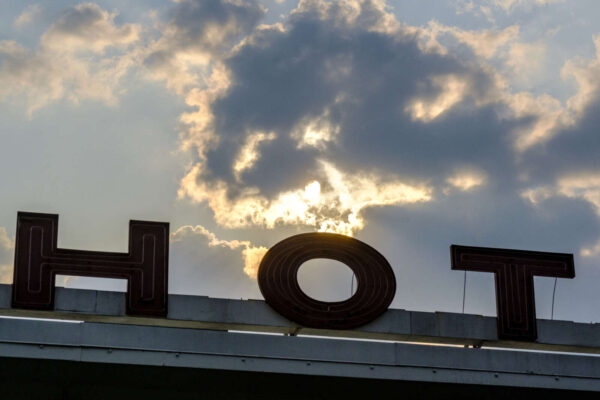
The county has activated its heat plan for today (Tuesday) as temperates climb today.
Cooling centers around the county will be available during normal operating hours in response to a National Weather Service heat advisory that is in effect from noon to 8 p.m.
Heat index values are expected to reach between 100 and 105 degrees across the region.
Supplies like bottled water, sunscreen, insect repellant and body wipes will be available at the cooling centers.
Three emergency centers for single adults with also activate day and night overflow shelter capacity, according to the county.
Here’s more from NWS on the alert:
Drink plenty of fluids, stay in an air-conditioned room, stay out of the sun, and check up on relatives and neighbors. Young children and pets should never be left unattended in vehicles under any circumstances. Take extra precautions if you work or spend time outside. When possible reschedule strenuous activities to early morning or evening. Know the signs and symptoms of heat exhaustion and heat stroke. Wear lightweight and loose fitting clothing when possible. To reduce risk during outdoor work, the Occupational Safety and Health Administration recommends scheduling frequent rest breaks in shaded or air conditioned environments. Anyone overcome by heat should be moved to a cool and shaded location. Heat stroke is an emergency! Call 9 1 1.
Our county has activated its Heat Plan for today, Tuesday, Sept. 5, in response to a @NWS_BaltWash Heat Advisory, in effect from noon to 8 p.m.
For details, visit: https://t.co/8AmmGoUNX6 pic.twitter.com/bgrcnABug0
— Fairfax County Government 🇺🇸 (@fairfaxcounty) September 5, 2023
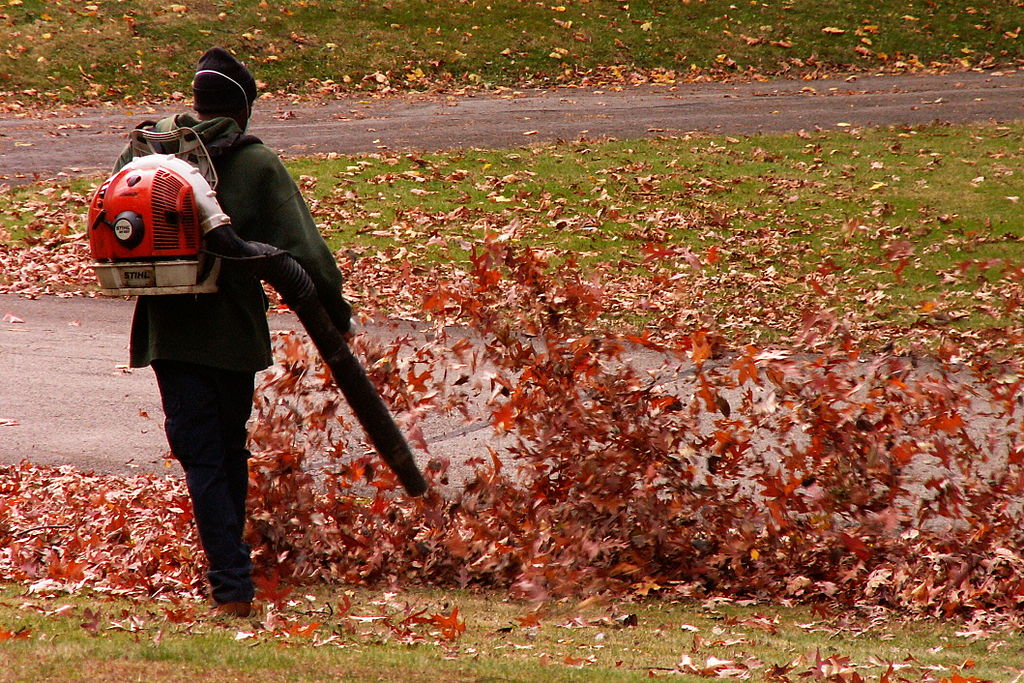
Fairfax County is steadily making progress on efforts to cut its use of gas-powered leaf blowers.
By the end of June next year — the conclusion of the 2024 fiscal year — the county plans to ensure that the supply of electric blowers and string trimmers is nearly 50% electric, according to John Silcox, a spokesperson for the Fairfax County Office of Environmental and Energy Coordination.
That means that 105 of the 217 leaf blowers owned and operated by the county will be powered by electric batteries.
“As funding allows, agencies will continue to replace aging gas models with new electric equipment,” Silcox said.
The effort is part of a countywide initiative to shift toward eco-friendly practices that reduce the county government’s carbon footprint overall.
In the fiscal year 2024 budget, for example, the county will replace 55 gas-powered leaf blowers with electric ones.
The county says transitioning to electric-powered lawn equipment will help reduce carbon emissions, noise and costs.
“Even as Fairfax County’s facilities are making the switch to battery-powered blowers and other electric equipment, we encourage residents and contractors to do the same,” Silcox said.
The effort has been underway since at least November 2021.
Photo via Cbaile19/Wikimedia Commons

This fall, Fairfax County will launch a guaranteed income pilot program, following in the footsteps of neighbors including Arlington County and Alexandria.
The upcoming Fairfax County Economic Mobility Pilot (FCEMP) will begin providing families with monthly payments totaling $2 million to “promote economic stability and social capital,” according to a press release.
The monthly payments of $750 will go to 180 eligible families chosen via application over the course of 15 months, with the funds being considered untaxable COVID-19 disaster relief that families have the freedom to choose how to spend.
The amount was determined by evaluating the cost of living in the county and the anticipated amount of time necessary to observe and assess the effects of guaranteed income on participants’ lives, a county spokesperson said.
Eligible families will also get access to optional financial coaching from United Way of the National Capital Area‘s Financial Empowerment Center, a partnership with Britepaths and the county, the county spokesperson continued.
“Like other basic income programs, the FCEMP promotes dignity and self-determination by enabling residents to take ownership of their own life and spending decisions,” the county website says.
Eligible applicants must be 18 years or older, have at least one child aged 16 or younger living in their household, and be employed with an income that falls between 150% and 250% of the 2023 Federal Poverty Level. They must also live in one of the following zip codes: 22306, 22309, 20190, 20191, 22041, 20170, 22003, 22150, 20120 or 20151.
The zip codes were chosen by overlaying current Opportunity Neighborhood boundaries and the zip codes they serve with the county’s Vulnerability Index, which analyzes a variety of factors such as race to determine vulnerable areas within the county, a county spokesperson said.
Through the pilot, the county says it hopes the regular payments will result in improved physical and mental health, improved educational outcomes for the children, increased economic stability, higher full-time employment rates, and increased housing and food security.
The pilot specifically aims to help certain households that “earn too much income to be eligible for assistance programs like TANF and SNAP but are struggling to make ends meet or are unable to take financial steps that would allow for economic mobility,” the county says.
As a result, households receiving public assistance benefits, such as Supplemental Security Income or Social Security Disability Income, will not be eligible. However, participants won’t lose their eligibility if they experience any changes in income or public assistance benefits during the pilot.
Supported by a partnership with Beam, a startup that helps administer cash assistance and social safety net programs, the application portal will go live on Sept. 23 and remain open until Oct. 3. Applications will be electronic only, and those selected will be notified via email or text.
The county has also partnered with George Mason University on a study of the pilot. Researchers will collect information from optional personal questions on the application “to understand the impact that unrestricted cash payments have on the economic and social well-being of working households,” the county says.
Participation in the study will not affect an applicant’s likelihood of receiving cash payments.
“Establishing a baseline understanding of families participating in the FCEMP is needed to inform a fully realized program over time,” the county says. “Thus, the FCEMP will measure the economic mobility gains and overall wellness of participants who choose to take part in the research component.”
The FCEMP is authorized by the Board of Supervisors and funded by the county’s general county and American Recovery Plan Act’s Coronavirus State and Local Fiscal Recovery Funds.
Photo via Sharon McCutcheon/Unsplash

